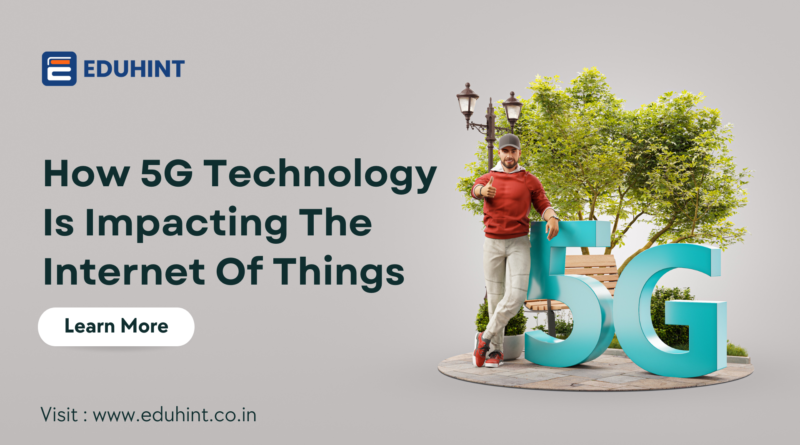3 min readHow 5G Technology is Impacting the Internet of Things
The Internet of Things (IoT) is a network of interconnected devices that can communicate and share data with each other. The IoT has the potential to revolutionize the way we live and work, but it has been held back by limitations in current network technology. With the advent of 5G technology, however, these limitations are beginning to be overcome, and the IoT is on the brink of realizing its full potential. In this article, we will discuss the impact of 5G technology on the IoT.
Let’s look at some limitation:
One of the primary limitations of the current 4G network technology is the lack of bandwidth. The IoT requires a large number of connected devices, each with their own unique data requirements. This can put a strain on the network and cause delays or even failures in data transmission. 5G technology, however, is able to provide significantly more bandwidth, allowing for more devices to be connected and for data to be transmitted more quickly and reliably. This will allow for the development of new and innovative IoT applications that were not previously possible.
Another limitation of the current 4G network technology is the lack of low-latency communication. The IoT requires real-time communication between devices, but the delays caused by 4G networks can make this difficult to achieve. 5G technology, however, is able to provide low-latency communication, allowing for near-instantaneous communication between devices. This will allow for the development of new IoT applications such as self-driving cars, remote surgery, and industrial automation.

5G also brings a new level of security to the IoT. One of the biggest concerns with the IoT is the potential for hacking and data breaches. 5G networks use advanced security protocols, such as Network Functions Virtualization (NFV) and Software-Defined Networking (SDN), to protect data transmissions. This will help to prevent hacking and data breaches, making the IoT a more secure and reliable technology.
The increased bandwidth and low-latency communication provided by 5G technology will also allow for the development of new use cases for the IoT. One of the most exciting new use cases for the IoT is the development of smart cities. Smart cities use IoT technology to improve the lives of citizens by making cities more efficient, sustainable, and livable. With 5G technology, smart cities will be able to connect more devices and transmit data more quickly and reliably, leading to new and innovative applications such as smart traffic lights, smart parking, and smart waste management.
Another exciting new use case for the IoT is the development of Industry 4.0. Industry 4.0 is the fourth industrial revolution and it is the integration of IoT technology into manufacturing. With 5G technology, Industry 4.0 will be able to connect more devices and transmit data more quickly and reliably, leading to new and innovative applications such as predictive maintenance, quality control, and logistics management.
The impact of 5G technology on the IoT will be huge. It will allow for the development of new and innovative applications that were not previously possible. It will also make the IoT more secure and reliable. 5G will help bring the IoT to its full potential, making it an integral part of our daily lives. From smart cities to Industry 4.0, the possibilities are endless.
Conclusion
5G technology is set to revolutionize the Internet of Things (IoT) by providing increased bandwidth and low-latency communication, leading to new and innovative applications and making the IoT more secure and reliable. The implementation of 5G technology will open doors for new use cases such as smart cities and Industry 4.0, improving the efficiency, sustainability, and livability of cities and industry respectively. As the world becomes more connected, 5G and IoT will play a critical role in shaping




